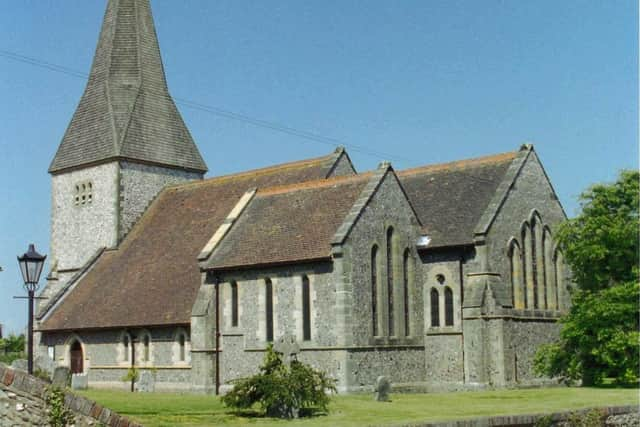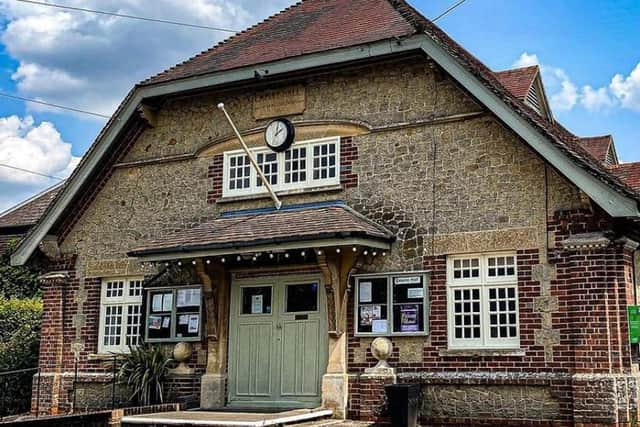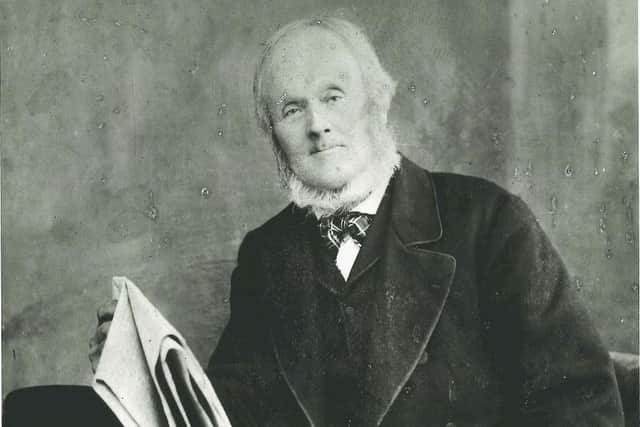History of the Sussex village of Graffham, from Domesday Book to royal honour
and live on Freeview channel 276
Owned and run by Jeeva and Vasu since 2008, the shop was turned into a community asset when shoppers were encouraged to email or telephone orders in instead of visiting the shop due to social distancing requirements. Orders were delivered to vulnerable Graffham residents by volunteers.
The village has the accolade of being recorded within the Hundred of Easebourne in the Domesday Book in 1086. In the 11th century, there were just seven villagers, six smallholders and a church. The village land was used for ploughing, and the woodland for pigs.
Advertisement
Hide AdAdvertisement
Hide AdRecords from as far back as 1495 reveal that the enclosure of common fields, as happened at Graffham, was piece-meal in the Tudor era, with tenants making exchanges of strips to create small parcels of land that were hedged and farmed.


In 1597, Graffham Heath Common comprised 248 acres. In 1605, the tenants and lord of Graffham enclosed 1,230 acres of nearby waste land, each person receiving an unspecified amount. Remaining common was enclosed in 1619, the lord and tenants receiving rateable proportions according to the amount they already held.
The 17th century brought a flourishing small-scale pottery, tile and brick making industry, the clay for which was abundant nearby and could be collected under licence regulated by the manorial court.
The pottery at Graffham had relatively wide trade distribution, from Bramber to Winchester, with main markets being at Graffham, Midhurst, Chichester and Petworth. The potters could sell direct to consumers or to middlemen from their door or they could take their wares to market.
Advertisement
Hide AdAdvertisement
Hide AdDigging for clay was permitted; provided that a licence was granted by the local lord. Regulations stipulated that they were not to dig within 40 feet of a road and that any ‘clay pits’ were refilled after collection of the clay. Records evidence of prosecutions for defying these rules.


In 1605, in an attempt to lay down the law on errant diggers, a Graffham court stipulated that ‘no potter or brick-maker shall dig clay upon the common or highways unless they do so at the lord’s will’. The penalty was a 5s fine.
One on particular occasion in 1670, described in the records as a ‘great digging’ on the common of ‘West Bushes’, Richard Madgewick, John Burcher, Richard Wisdom Senior and Jr (all potters) and John Philip (a brick and tile maker) none of whom had a licence, were all prosecuted. The court ruled that if they carried out any future such activities without a licence, they’d be fined 5s for the first offence and thereafter 10s per future offence.
It seems that Richard Wisdom Senior was something of a serial offender. He is also known to have built a ‘pot-kiln’ without licence, which he was ordered to pull down or pay a fine of 2s 6d. A kiln has been uncovered at Ochre Pits Copse close to the site of the current Perrott Farm where Richard Wisdom Senior was known to have lived around this time, thus probably revealing the location of his ‘illegal’ activities!
Advertisement
Hide AdAdvertisement
Hide AdGraffham is also known for its two public houses, The Forester’s Arms and The White Horse. A third pub, The Woodman, closed in the 1950s and has been transformed into a house. The Forester’s Arms is a Grade II listed building dating from the early 17th century. The White Horse dates back to the beginning of 1900.


The village church, dedicated to St Giles, dates to the 12th century. It was completely redesigned by architect G.E. Street in 1874-5 as a memorial to Bishop Samuel Wilberforce, son of anti-slavery campaigner William Wilberforce and owner of nearby Lavington Park.
The exterior walls of knapped flint date from this time. The tower and spire, which had not been worked on by Street, were found to be unsafe and were taken down in 1885. The tower was rebuilt in 1887 and the spire which is covered with Sussex shingle was added in 1889.
Inside the nave is lined with two Norman arches dating from the late 12th century. The church also boasts a probable early Norman font. There are a number of circa 14th century features including an arch to the West doorway, a piscine, and the lock to the vestry door. The church’s stained-glass windows date from 1874 and were produced by the London based Clayton and Bell factory.
Advertisement
Hide AdAdvertisement
Hide AdThe village is also home to The Empire Hall, built by James Buchanan, later Lord Woolavington, in 1907. It was originally designed to accommodate 400 people and intended for the use of all in the village for ‘amusement, pleasure, and improvement’. As well as the hall, there was a reading room and library and space for the local Conservative Unionist Association.
At one time the library and reading room doubled as a doctor’s surgery and from 1919 to 1977, the hall was the base of the local Women’s Institute. The hall continues to be a valuable asset to the community and hosts events throughout the year including plays, concerts, and community groups, and since 2006 has even been home to Graffham Empire Movies showing blockbuster films.